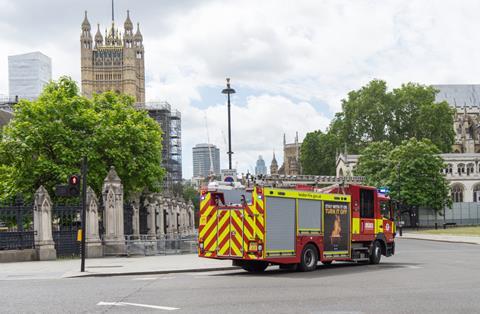But group says focus should not just be on the number of staircases
The London Fire Brigade has cautiously welcomed the government’s design guidance for second staircases in high-risk buildings but said the fire safety measure should not be limited to the number of staircases alone.
The Department for Levelling Up, Housing and Communities finally published its long-awaited guidance for designing second means of escape in residential buildings above 18m at the end of last month.
It included confirmation that interlocked stairs which occupy the same core would not be compliant under the regulations, a measure backed by the LFB, but no mandatory requirement for evacuation lifts.

The LFB said: “We’ve been calling for developers to include second staircases in tall buildings for some time and are pleased that the Government is taking this important step to provide clarity and improve building safety.”
It added: “We’re also seeking to ensure that the focus is not limited to the numbers of staircases alone, but to also ensure appropriate protection of those staircases including firefighting measures.
> See also: Second staircase design guidance will still result in delays to schemes, HBF warns
“There should also be equal consideration for the escape of all building users through the use of suitably protected evacuation lifts.”
Although evacuation lifts were not an objective requirement in the guidance, they have been required in the capital under the London Plan since 2021.
The absence of this requirement in the national guidance has been criticised by industry groups including RIBA and the National Fire Chiefs Council.
The Home Builders Federation also criticised the guidance last week for a lack of detail which the group said would make it “impossible” for schemes to be signed off by fire services.
The policy will come into effect on 30 September 2026, with a 30-month transition period.



























No comments yet